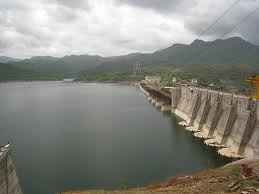A Brief Introduction to the Narmada Issue
Opponents of the dam question the basic assumptions of the
Narmada Valley Development Plan
and believe that its planning is unjust and inequitous
and the cost-benefit analysis is grossly inflated in favour of building
the dams. It is well established that the plans rest on untrue and
unfounded assumptions of hydrology and seismicity of the area and the
construction is causing large scale abuse of human rights and displacement
of many poor and underprivileged communities. They also believe that water
and energy can be provided to the people of the Narmada Valley, Gujarat
and other regions through alternative technologies and planning processes
which can be socially just and economically and environmentally
sustainable.
We recognise the complexity
of the issues involved. However, once one cuts through all the rhetoric,
lies and subterfuge of the vested interests, the gross inequities are
clear. Large numbers of poor and underprivileged communities (mostly
tribals and dalits) are being dispossessed of their livelihood and even
their ways of living to make way for dams being built on the basis of
incredibly dubious claims of common benefit and "national interest". For
us, this is simply immoral and therefore unacceptable. No purported
benefits can be used to justify the denial of the fundamental rights of
individuals in a democratic society. And given the evidence of past
megadam schemes in India and elsewhere and what has already happened in
the Narmada Valley, we believe that the promised benefits will never be
realised. A mass of research shows that even on purely technical grounds, large dams have been colossal failures. While they have delivered only a fraction of their purported benefits, they have had an extremely devastating effect on the riverine ecosystem and have rendered destitute large numbers of people (whose entire sustenance and modes of living are centered around the river). For no large dam in India has it been shown that the resettled people have been provided with just compensation and rehabilitation. At a more abstract level, the questions that arise in the Narmada Struggle challenge the dominant model of development (of which Sardar Sarovar dam is a prime example) that holds out the chimerical promise of material wealth through modernisation but perpetuates an inequitous distribution of resources and wreaks social and environmental havoc.



greattttttttttttt
ReplyDelete